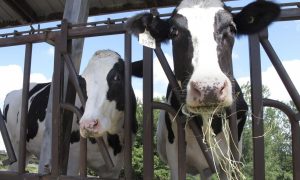
“Using fresh dairy products versus powders is always more challenging for industrial baking companies due to refrigerated storage needs and a relatively short shelf life,” said Kimberlee Burrington, director, training, education and technical development, American Dairy Products Institute.
Megan Patterson, marketing communication manager, Fonterra Americas, said bakers can explore alternate forms of real ingredients in some cases.
“Skim milk powders create a clean, dairy milk taste with consistent composition and quality, which is perfect when a fresh milk supply or refrigeration is not available,” she said.
Many industrial bakeries use votated fats, which are tempered to a specific temperature. Votating systems convert liquid fats into plasticized and aerated fats. This improves the oil’s ability to build structure in baked goods. When working with real butter, the opposite must take place. The hard saturated fat requires tempering at room temperature to become pliable for blending.
“There’s no arguing that an all-butter sponge cake has an unbeatable richness in both flavor and color, but as the fat solidifies at room temperature it can create a drier texture with a shorter shelf life,” Ms. O’Shaughnessy said. “Substituting some of the butter with a fat that remains liquid at room temperature can help these products stay moist and tender for a longer time, as well as offer a cost-saving advantage.”
The downside can be flavor. Vegetable oils tend to lack rich flavor and create off notes.
“The addition of natural dairy-derived flavors can counteract this by building back the richness and masking any unfavorable off notes,” Ms. O’Shaughnessy said.
Cheese flavors are useful when cheese is a characterizing ingredient in baked goods. Most whole cheese ingredients do not provide enough flavor. And when too much is used, baked goods may become soggy. Still, adding some real cheese contributes to appearance.
“Cheese provides aroma and flavor enhancement to all savory bakery applications,” said Qiqi Peng, manager applications, cheese and ingredients, Hilmar Ingredients. “The blister browning from molten cheese creates an attractive physical appearance to everything from muffins to brioche to biscuits.”
Other ingredients, however, can help extend the usage of cheese in baked goods and help a little go a long way.
“Bakers can use a lower amount of butter, cheese and other whole dairy products when they add a small percentage of our ingredients to replace the flavor and increase some of the functional aspects of dairy as well, such as mouthfeel and richness,” said Michael Ivey, national sales director, Butter Buds Inc.
Dairy proteins provide an array of nutritional and functional benefits. For starters, they add high-quality, complete protein to grain-based foods.
“Proteins can be used for fortification, improving the nutritional value of bakery products,” said Pratishtha Verma, research and development scientist, Idaho Milk Products. “Milk protein concentrates and isolates are compatible for use in many bakery applications. These ingredients can be used for product innovation in sports nutrition, weight management and healthful snacking segments.”
Because proteins bind water, it is often necessary to adjust the proportion of other ingredients to standardize moisture content. This is important to achieve the desired texture and shelf life.
“Whey protein aids in emulsifying fat and improving texture by maintaining moisture content and volume,” Ms. Peng said. “It also improves dough texture by reducing stickiness and aids in emulsifying fat, providing a smooth texture while maintaining organoleptic qualities.”
Lactose, the sugar inherent in animal-based milk, is often used to add sweetness and mouthfeel to baked goods. Permeate, the concentrate that results after fat and protein are removed from milk or whey, is a high-lactose ingredient loaded with vitamins and minerals.
“The addition of milk permeate powder will help reduce the sodium content,” Ms. Verma said. “It provides salty notes, and it is possible to eliminate salt from some recipes. The lactose in the permeate will enhance surface browning via the Maillard reaction. It helps to develop caramelized flavor under the influence of oven heat, which is desired in many bakery applications. Permeate can also be used as an economical ingredient to replace other carbohydrates.”
Whey proteins may function as an egg replacer or reducer. The substitution should be made on a protein content basis.
“Whey protein can be used to replace or stretch the use of eggs,” said Steve Adolphson, research manager, Glanbia Nutritionals. “Some products might want to replace eggs totally for allergen reasons. Others may want to avoid the huge cost fluctuations in eggs.”
Glanbia Nutritionals offers an all-whey protein solution and a whey protein plus flax option for this purpose. The latter is suggested for baked items like cookies, while the former is for products such as cakes, which require more leavening performance.





















